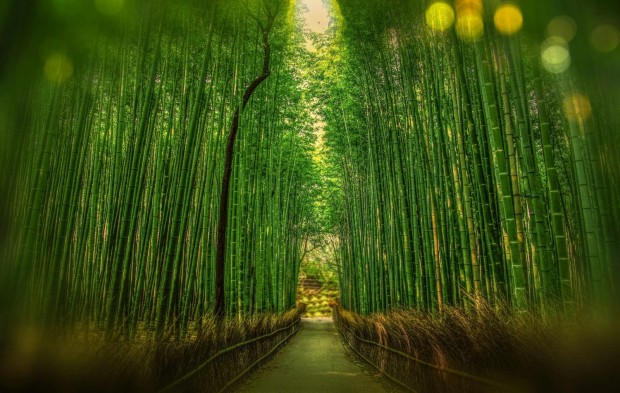Bamboo stands out as a highly sustainable material in the construction industry due to its rapid growth and regenerative properties. These make it an eco-friendly alternative to traditional building materials. Its strength-to-weight ratio rivals steel, allowing sturdy and resilient structures to be built using bamboo.

(Photo : Pexels/Pixabay )
1. The Arc at Green School - Bali, Indonesia
The design and architecture business Ibuku, located in Bali, has constructed more than one hundred one-of-a-kind bamboo structures in Indonesia and other countries over the past decade. Among its most recognizable works is the wellness center and gymnasium Arc, constructed for Green School in 2021. Over 62 feet in length, the bamboo arches that make up the engineering marvel are arranged in a spiral pattern. Moreover, the Arc uses anticlastic gridshells, which gain strength by curving in multiple directions. This allows the team to reach a lightness of form that has never been seen before. Trusses are required for the majority of buildings of this size.
2. Bamboo Sports Hall - Thailand
Panyaden International School, situated on the periphery of Chiang Mai and surrounded by rice paddies, utilized cranes to hoist 17-meter-wide trusses that were prefabricated on-site into position. Using ropes rather than steel fasteners, Chiangmai Life Architects and Construction had the opportunity to develop a structure that absorbed more carbon in its components than it generated during construction. It was reportedly accomplished by utilizing an open lattice structure, which reduces the need for air conditioning.
3. Thread - Senegal
Japanese architect Toshiko Mori designed a canopy that folds and extends over the bleached structures of Senegal's cultural epicenter. Its bamboo construction encircles several open-air courtyards, creating a fluid and contemporary version of a traditional thatched roof.
Also Read: Mercator AI's Rapid Business Development Advances Across the US
4. Kontum Indochine Café - Vietnam
Vo Trong Nghia Architects is responsible for the design of the Kne Hotel's Banqueting Hall and Restaurant. The 15 conical bamboo columns that hold up the top portion of the tower were created using bamboo. The architects were inspired to construct these columns by traditional Vietnamese baskets. On the other hand, the actual structure of the roof is made up of plastic panels covered in bamboo.
5. Sharma Springs - Indonesia
IBUKU conceived Sharma Springs as a nature retreat for the Sharma family to enjoy. Accordingly, nearly every surface area of the 750-square-meter dwelling is composed of bamboo. Four bedrooms are encased in glass, and a library and a playroom are also equipped with air conditioning. The building has six stories. A tunnel entry provides direct access to the open-air living, dining, and kitchen areas on the fourth floor of the building.
6. Naman Retreat - Danang, Vietnam
Two different kinds of bamboo were used locally to construct the conference hall at Naman Retreat Resort, which is located close to the city of Da Nang. Vo Trong Nghia Architects used bamboo to create the vaulted ceiling that was 9.5 meters high and 13.5 meters wide. Bamboo was utilized because it was readily available in the area and inexpensive. In addition to having a side-logia composed of bamboo, the hall is glazed on both ends.
Related Article: Brock Researchers Plan to Transform Bamboo into a Sustainable Construction Material







